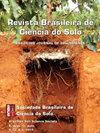Soil management practices adopted by farmers and how they perceive conservation agriculture
IF 2
4区 农林科学
Q3 SOIL SCIENCE
引用次数: 5
Abstract
: In some rural properties of Brazil, soil and water conservation practices are partially or inappropriately implemented, intensifying soil erosion, even in no-tillage (NT) areas. This study aimed to check the farmer’s understanding of conservation agriculture (CA) and assess whether they are using practices appropriate to soil conservation. A basin in the state of Paraná, in Southern Brazil, was selected. Surveys were conducted based on a structured questionnaire and in-person interviews of 234 farmers. Among these farmers, 67 % do not understand CA pillars adequately, and 68 % stated they have been using NT for over 12 years. However, 58 % stated that they carried out some kind of soil preparation. Furthermore, some of the farmers only partially implemented CA, adopting a low level of crop diversification. The main problems pointed out by the farmers to justify simplifying the CA approach were soil compaction, low production of plant biomass and resistance of weeds to herbicides. Most farmers in the study do not have enough knowledge of the pillars of CA. As a result, there is little diversification in crop rotation, and the soil is continually disturbed with chiseling. Furthermore, although most farmers use terracing, they drive sprayers crossing terraces and following the slope, a practice that can impair the capacity of terraces to control surface water runoff. These practices do not contribute to soil and water conservation and endanger the sustainability of agricultural production systems.农民采用的土壤管理方法以及他们对保护性农业的看法
在巴西的一些农村地区,水土保持措施部分或不适当地实施,加剧了土壤侵蚀,即使在免耕地区也是如此。本研究旨在检验农民对保护性农业的认识,并评估他们是否采用了适合土壤保持的做法。巴西南部帕拉纳州的一个盆地被选中。调查采用结构化问卷和对234名农民的面对面访谈进行。在这些农民中,67%的人不充分了解CA支柱,68%的人表示他们已经使用NT超过12年。然而,58%的人表示他们进行了某种土壤准备。此外,一些农民只部分实施了CA,采用了低水平的作物多样化。农民指出简化CA方法的主要问题是土壤压实、植物生物量产量低和杂草对除草剂的抗性。研究中的大多数农民对CA的支柱缺乏足够的了解。因此,作物轮作的多样性很少,土壤不断受到凿凿的干扰。此外,尽管大多数农民使用梯田,但他们驾驶喷雾器穿过梯田并沿着斜坡行驶,这种做法会损害梯田控制地表水径流的能力。这些做法无助于保持水土,并危及农业生产系统的可持续性。
本文章由计算机程序翻译,如有差异,请以英文原文为准。
求助全文
约1分钟内获得全文
求助全文
来源期刊

Revista Brasileira De Ciencia Do Solo
农林科学-土壤科学
CiteScore
3.00
自引率
11.80%
发文量
32
审稿时长
9-24 weeks
期刊介绍:
The Revista Brasileira de Ciência do Solo is a scientific journal published by the Brazilian Society for Soil Science (SBCS), founded in 1947, and is responsible for the propagation of original and inedited technical-scientific work of interest for Soil Science.
Contributions must not have been previously published or submit to other periodicals, with the only exception of articles presented in summarized form at professional meetings. Literature reviews are accepted when solicited by the Editorial Board.
 求助内容:
求助内容: 应助结果提醒方式:
应助结果提醒方式:


